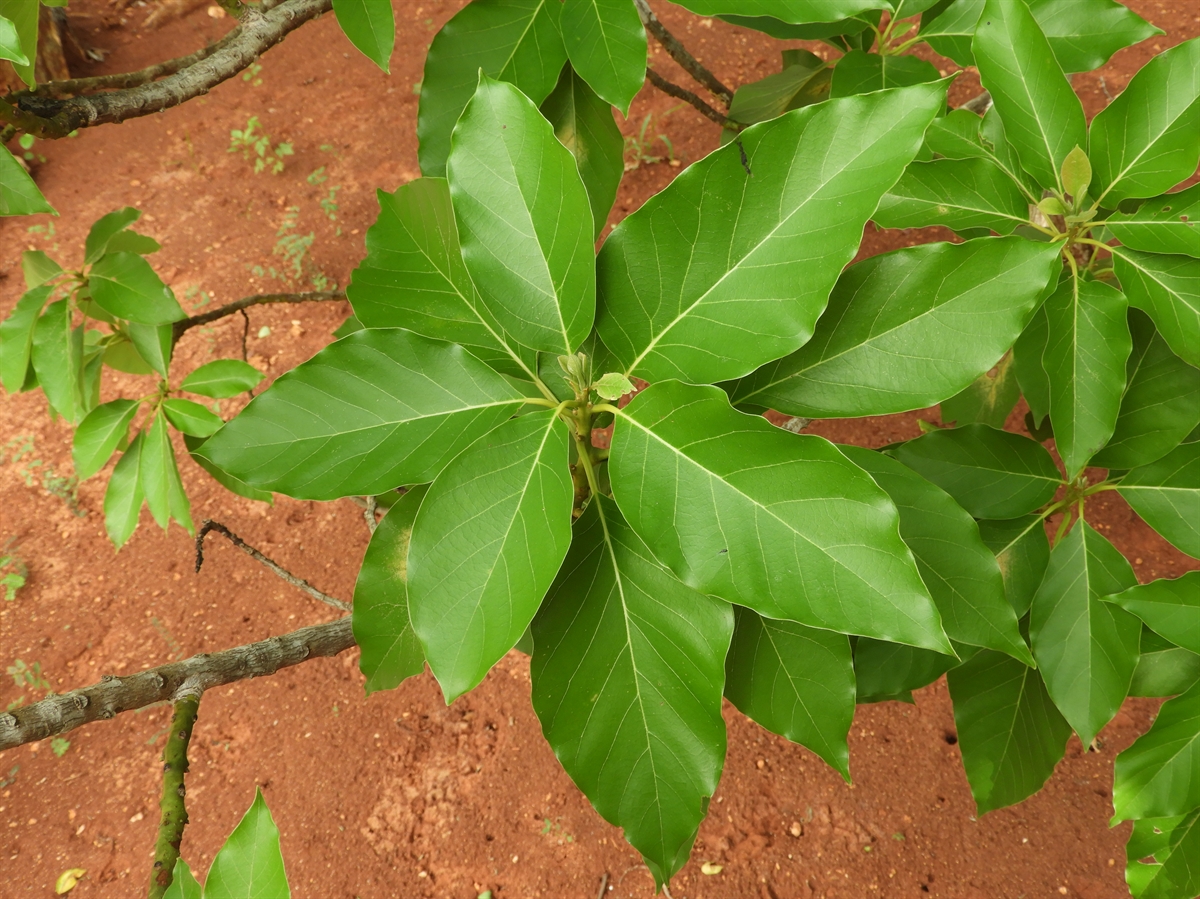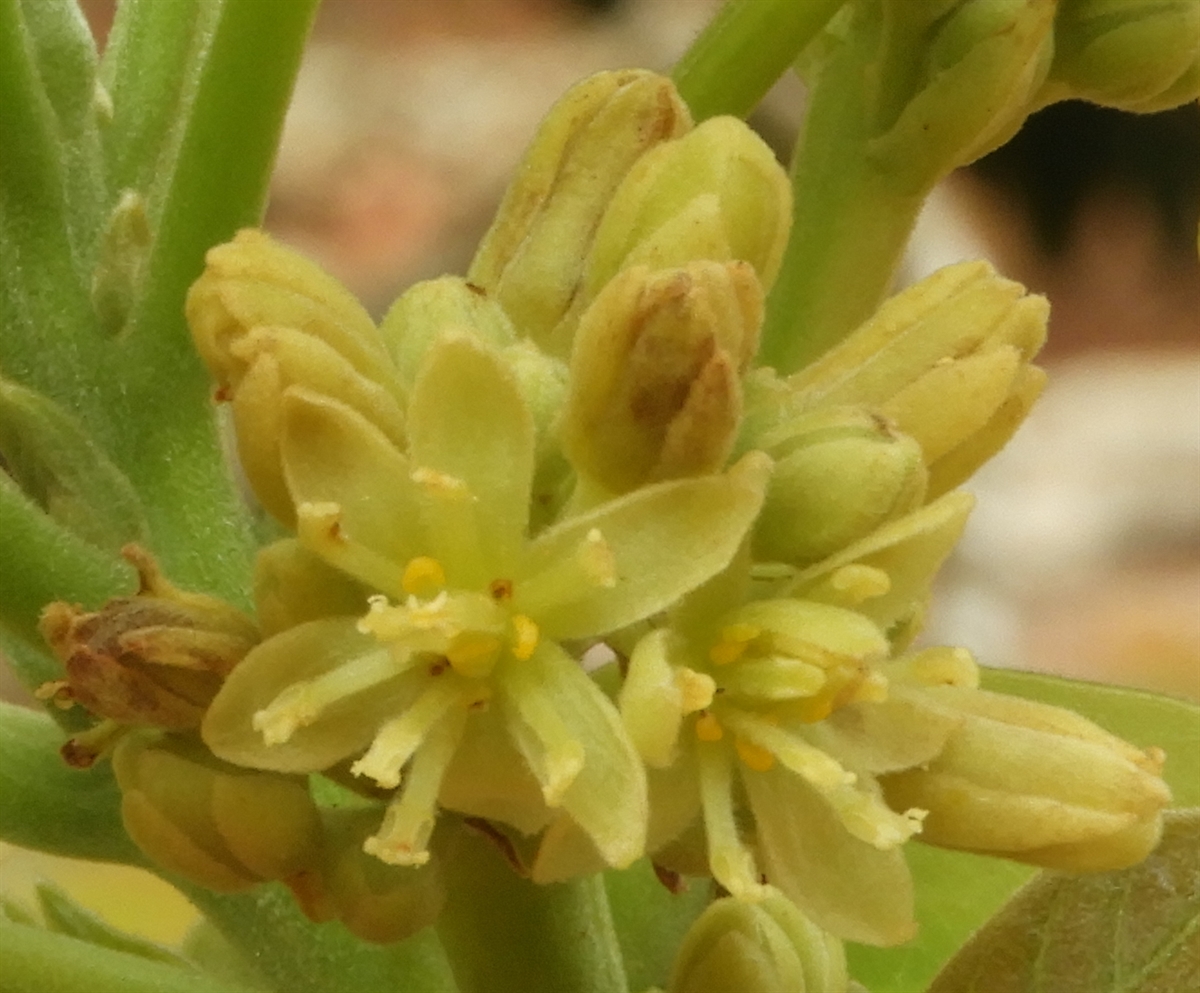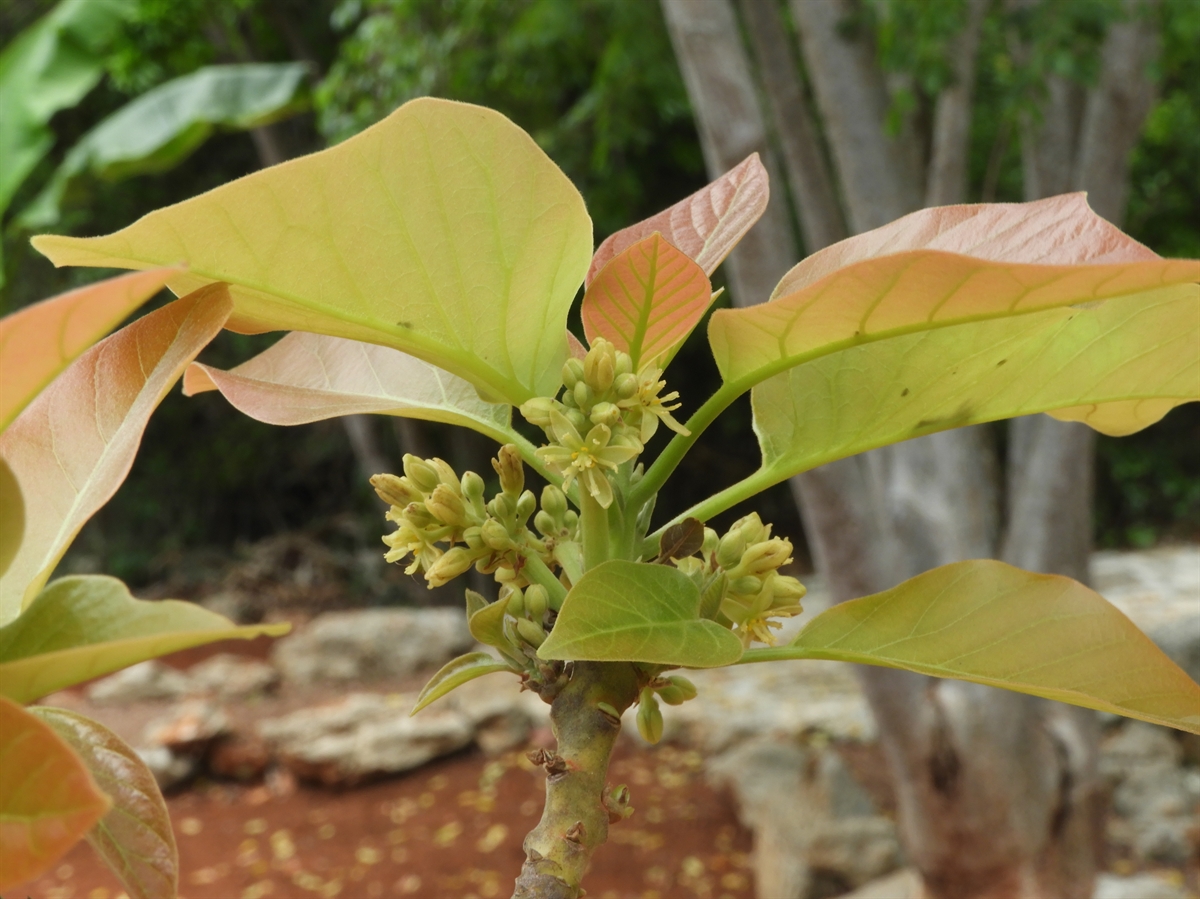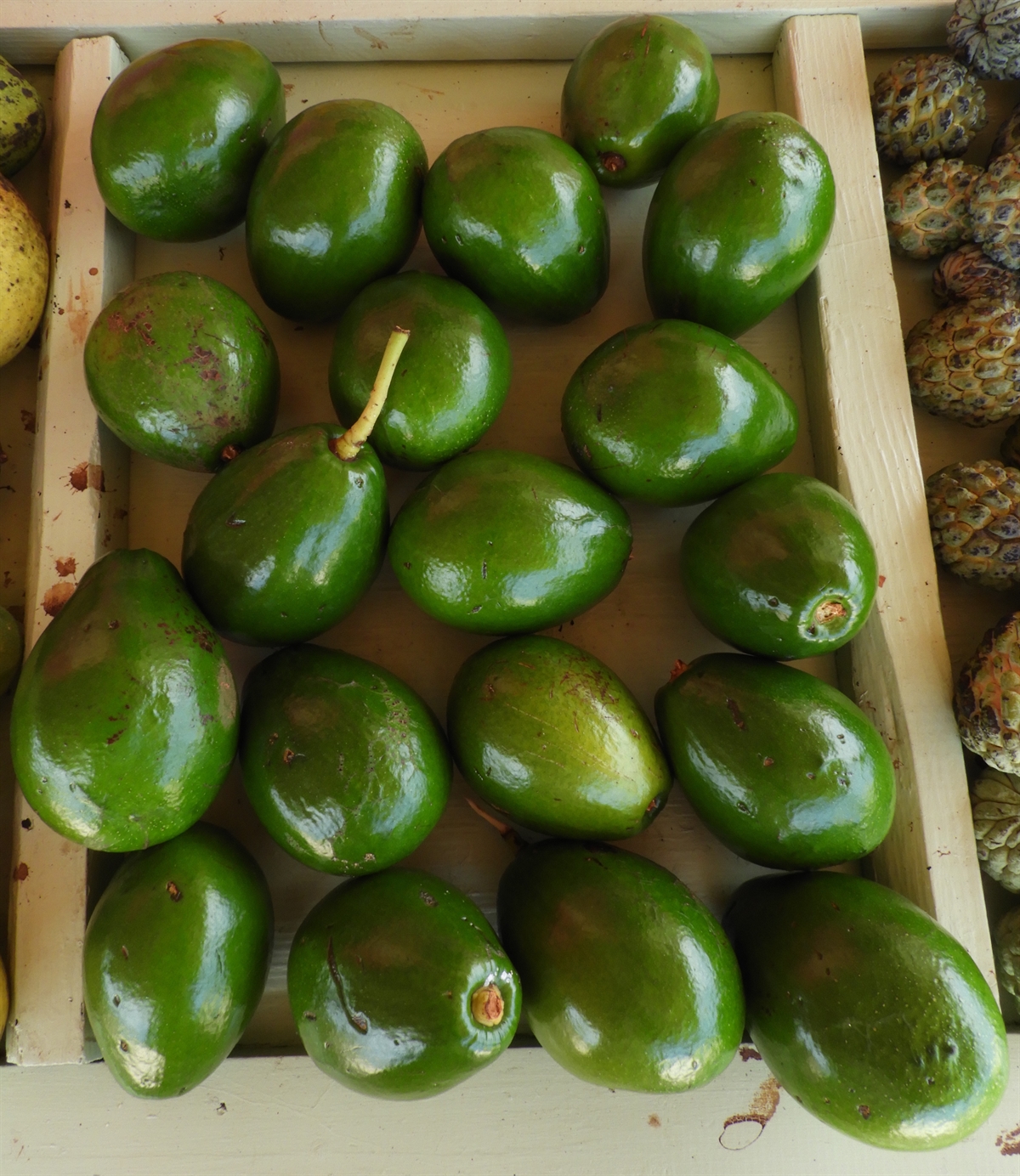Habit: Persea americana grows as a tree up to 20 m in height with a trunk to 50 cm in diameter. The leaves are arranged alternately, elliptic to ovate, to 25 cm in length with an entire (sometimes undulate) margin and an acuminate leaf apex.
The complete, perfect, actinomorphic flowers are arranged in panicles. The calyx has 3, yellow green, pubescent, unfused sepals. The corolla has 3, yellow green, pubescent, unfused petals. There are 6 stamens and 6 staminodes with the 3 center ones have glands below the anthers. The superior ovary has a single locule and 1 seed. The fruit is a drupe at maturity.
Habitat: Persea americana grows in Human Altered environments (yards, gardens, farms).
Distribution: Persea americana is NOT native to the Lucayan Archipelago but occurs on most of the islands. It is native to Central America but now occurs globally in tropical and subtropical regions.
Medicinal/Cultural/Economic usage: Persea americana is used in general bush teas, for gastrointestinal issues, hypertension and high blood pressure.
The fruits are delicious and highly nutritious.



